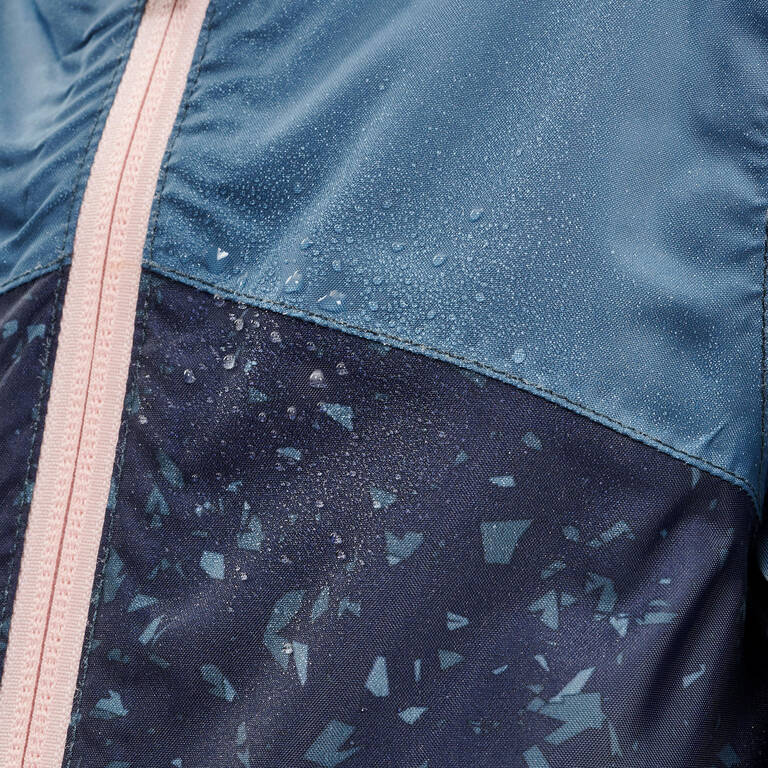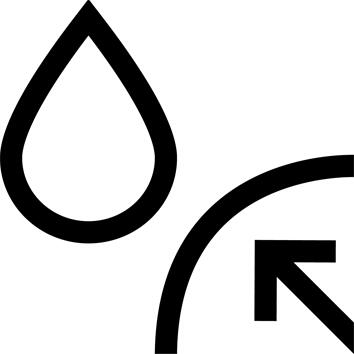WATERPROOF FEATURE OF THE COMPONENT
The resistance of a fabric is measured by the height of a water column in mm that can be supported by the fabric (test based on the JIS 1092 standard)The higher the water pressure, the more waterproof the fabricThis clothing was validated in a shower test using 60 L/sqm/hr of water for 1hIt reproduces the average conditions of a rain shower in the mountains
A component with an impermeability of 5,000 mm will withstand the pressure exerted by 5,000 mm of water (corresponding to a 1-hour rainfall)
COMPONENT BREATHABILITY
Component breathability is measured by its thermal evaporative resistance (RET).
This is its capacity to let water vapour generated by the body during physical activity escape and therefore avoid water accumulating on the skin.
The lower the RET, the more breathable the fabric.
RET ≤ 6: very breathable fabric
RET ≤ 12: breathable fabric
RET ≤ 20: little or no breathability
PRACTICAL DETAILS
Can be stored in his pocket. Central zip opening, elasticated hood, wrists and waistband
Care
1/ Machine wash (30 to 40°C): fasten hook and loop tabs and zips, use gentle detergent. Wash jackets and trousers inside out. Loosen straps and elastics.
2/ Avoid folding the garment too much in the washing machine: this can damage it.
3/ Do not mix clothing styles and colours.
4/ Do not use bleach or fabric softener
5/ Rinse thoroughly followed by a gentle spin cycle.
6/ Dry either on a washing line or in the drier (minimum temperature & duration)
WHERE DO OUR JACKETS COME FROM?
Created in our international design centre at the foot of the Mont Blanc in France, this fleece is then manufactured and assembled by our suppliers in China and Vietnam.
These are partners that have genuine expertise in making our tents and with whom we are in close collaboration.
Thanks to this relationship of trust with our industrial partners, we can create high-quality technical products.


























